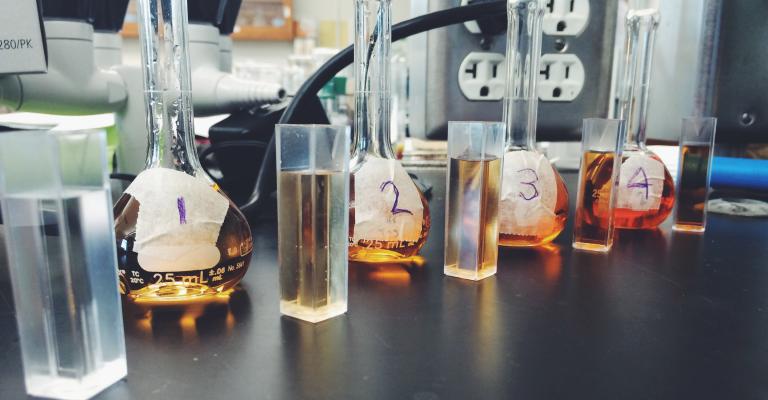Research
An especially important aspect of any undergraduate chemistry curriculum is research. In today’s world, students intending to pursue post-baccalaureate training in PhD graduate programs, medical school, pharmacy school, etc. are not competitive without a significant undergraduate research experience. Moreover, it is evident that research experiences at the undergraduate level (as well as in high school) are an essential aspect of encouraging talented students to pursue advanced degrees and careers in chemistry. Research experiences teach students critical thinking and educates them with regard to the “scientific process and method,” allowing them the opportunity to see for themselves how science is created and how it evolves.
There are several ways to get involved in research in the chemistry department at SSU:
- Attend seminars Fridays at noon. Check out the Chemistry Seminar schedule and room each semester.
- Join a research group. Check out faculty research projects listed below.
- Take the research class CHEM 315.
- Participate in summer research either at SSU or through the National Science Foundation.
Faculty Research Projects
This project explores organic chemistry reactions to synthesize novel molecules containing the β-Carboline ring structure. The β-Carboline system is of significant interest to scientists due to its presence in numerous biologically active compounds derived from plants. Given its diverse pharmacological potential, new β-Carboline-based molecules could contribute to the development of innovative drugs, including antibiotics, antivirals, and anticonvulsants. Participants in this project will gain hands-on experience in organic synthesis, including techniques for formation, purification, and characterization.
This project centers around the plant, Opuntia ficus-indica (aka prickly pear and nopales), which is native to Mexico. This plant has long been a part of Mexican cuisine. It has been suggested that this plant can regulate blood glucose levels in diabetics and/or prevent diabetes.
Nopales have been shown to stabilize blood glucose levels in diabetics when consumed with a high carbohydrate breakfast (López-Romero, 2014). Nopales have also been used as a natural method to treat waste water (Nouj, 2021). We don’t quite understand either mechanism, but wonder if they are connected. Questions we have considered are:
Can nopales inhibit the breakdown of carbohydrates to glucose?
Can something in nopales (mucilage) bind glucose?
Do nopales increase the uptake of glucose? (via glucose transporters)?
Do nopales increase flux through the pathways in which glucose leaves the body?
Do nopales regulate blood glucose levels by a mechanism similar to diabetes drugs?
In working to understand how nopales work we realize we need to identify compounds found in nopales and understand the structures and mechanisms of anti-diabetic drugs. Our lab utilizes two assays to monitor glucose levels: an absorbance assay and a fluorescent assay. We also study glucose binding in mammalian cells.
My research group is focused on nanotechnology, Raman spectroscopies, and chemical education. We are dedicated to the development of new plasmonic substrates for surface-enhanced Raman scattering spectroscopies and the application of these substrates to the study of chemistry at the nanoscale. We also spend our time developing novel chemistry educational experiences for students of all ages.
Currently my research focuses on finding ways to help students learn to use Computers in Chemistry. I run a website, chemcompute.org, where students can run computational chemistry jobs on supercomputers across the country. Our group studies how this helps students learn chemistry and gain confidence in using computers to perform scientific research. Our group develops new educational materials for teaching chemistry through quantum calculations and molecular dynamics.


